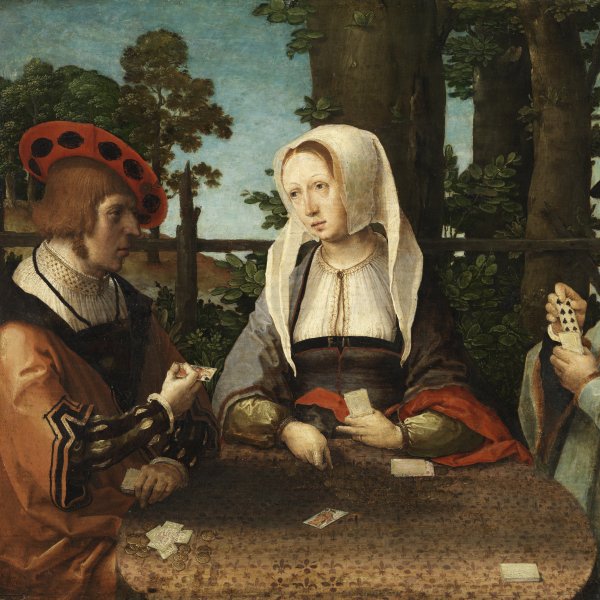Lucas van Leyden
Leiden, c. 1494-1533
Lucas van Leyden was a printmaker, draughtsman and painter. He is considered one of the great names of Dutch genre painting and one of the most brilliant printmakers of all times. According to Van Mander, he received his first lessons from his father, the painter Hugo Jacobsz. then continued his training with Cornelis Engebrechtsz.
A considerable amount is known about Lucas van Leyden and from 1500 onwards he is frequently mentioned in documents in his native city. He married the daughter of a magistrate, was a member of two militia companies, enjoyed a comfortable social position and was among the most prosperous citizens in Leiden. Lucas met Dürer during a trip to Antwerp in 1521. They exchanged prints and Dürer painted Lucas’ portrait. According to Van Mander, at the age of thirty-one Lucas embarked on a trip around the provinces of Zeeland, Flanders and Brabant in the company of Jan Gossaert. Lucas van Leyden was a prolific artist and most of his output comprises prints, of which around 200 have survived, most of them signed and dated in the plate. His first prints reveal the influence of Dürer’s graphic work, while from 1525 he was influenced by Italian art through Gossaert and Marcantonio Raimondi’s engravings. Lucas’ surviving paintings are relatively few in number, considered to be around fifteen, of which four were described by Van Mander: The Virgin and Child with Saint Mary Magdalen and a Donor (Alte Pinakothek, Munich), The Last Judgement (Stedelijk Museum De Lakenhal, Leiden), The Adoration of the Golden Calf (Rijksmuseum, Amsterdam), and The Healing of the Blind Man of Jericho (Hermitage, St. Petersburg). Despite being a widely admired and highly imitated artist, Lucas van Leyden did not employ assistants or have any pupils.
A considerable amount is known about Lucas van Leyden and from 1500 onwards he is frequently mentioned in documents in his native city. He married the daughter of a magistrate, was a member of two militia companies, enjoyed a comfortable social position and was among the most prosperous citizens in Leiden. Lucas met Dürer during a trip to Antwerp in 1521. They exchanged prints and Dürer painted Lucas’ portrait. According to Van Mander, at the age of thirty-one Lucas embarked on a trip around the provinces of Zeeland, Flanders and Brabant in the company of Jan Gossaert. Lucas van Leyden was a prolific artist and most of his output comprises prints, of which around 200 have survived, most of them signed and dated in the plate. His first prints reveal the influence of Dürer’s graphic work, while from 1525 he was influenced by Italian art through Gossaert and Marcantonio Raimondi’s engravings. Lucas’ surviving paintings are relatively few in number, considered to be around fifteen, of which four were described by Van Mander: The Virgin and Child with Saint Mary Magdalen and a Donor (Alte Pinakothek, Munich), The Last Judgement (Stedelijk Museum De Lakenhal, Leiden), The Adoration of the Golden Calf (Rijksmuseum, Amsterdam), and The Healing of the Blind Man of Jericho (Hermitage, St. Petersburg). Despite being a widely admired and highly imitated artist, Lucas van Leyden did not employ assistants or have any pupils.





